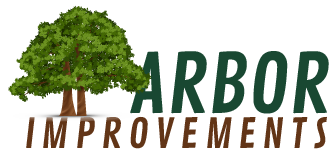When a major storm hits, it leaves more than just mess in its wake. The mighty trees often bear the brunt, facing broken branches, split trunks, or uprooting. However, with the right care and attention, many storm-damaged trees can recover. Arbor Improvements will share what steps are needed to help your trees recover after a major storm passes through.
What Can You Do for a Damaged Tree?
• Avoid downed power lines. If trees have fallen on power lines, report it immediately to local authorities and stay clear.
• Wear protective gear, including gloves, safety glasses, and a hard hat.
• If you’re unsure about the stability of a tree or any structure nearby, consult a professional.
Assessment is Key – Identify the extent of the damage:
• Minor damage: If only small branches (less than 2 inches in diameter) are damaged, the tree will often fully recover.
• Major damage: Large broken limbs, split trunks, or more than 50% canopy loss. Recovery is possible, but it’s a good time to consult an arborist.
• Severe damage: Trees with stripped bark, split or twisted main trunks, or those that are completely uprooted may not be savable. You may want to have the tree removed.
Is there a Wrong Way to Prune Trees?
A common misconception is that severely damaged trees should be drastically pruned. However, trees need their foliage to produce food and recover. To help aid your tree’s recovery you should:
• Remove broken, hanging limbs.
• Prune damaged branches back to the main limb or to the trunk. Avoid leaving stubs.
• Avoid “topping” trees, which involves cutting main branches back to stubs. This can hinder the tree’s recovery and future growth.
Additional Tree Recovery Steps
After cleaning up your tree there are some long term care tips that will aid in a full recovery for your trees:
• Just like humans, trees are prone to stress, and nothing reduces stress more than proper hydration.
• Water the trees deeply after the storm and maintain regular watering, especially if the weather turns dry.
• Apply mulch around the base of the tree (but not touching the trunk) to help retain moisture and regulate soil temperature.
• After a storm, it might seem logical to provide extra nutrients to the tree. However, fertilizing can stimulate rapid growth that can cause weakness and become prone to future breakage.
• Wait for the tree to show signs of new growth, indicating that it’s recovering before considering any fertilization.
Stump Grinding, Tree Trimming, Removal & More in Greenville, Greer, Mauldin, Simpsonville, Union and Spartanburg, SC
Damaged trees can be more susceptible to diseases and pests. Regularly inspect your trees for signs of infestation or disease and treat accordingly. Hire a certified arborist to assess and treat large or valuable trees. They can determine the best course of action and might be able to save trees that appear lost. Remember, trees have an incredible ability to recover from damage. Even if a tree loses a huge amount of its structure, given time, it might sprout new branches and leaves and return to its former glory. In cases where trees are severely damaged or pose a risk to people and property, removal may be the only option. It’s a tough decision, but sometimes it’s the best one for safety as well as the health of your landscape. While storms can be devastating, understanding the steps to recovery can give your trees a fighting chance. With patience, care, and expert advice, your landscape can rebound, and your trees can continue to stand tall. After all, they are a testament to nature’s resilience, and with a little help, they often bounce back stronger than ever. For after storm tree services and much more, contact Arbor Improvements today.


